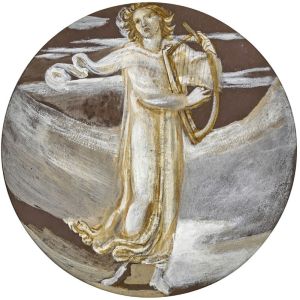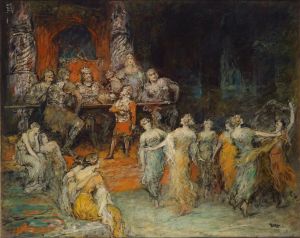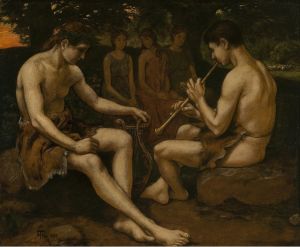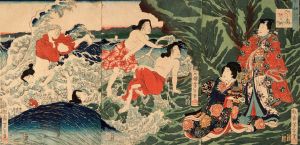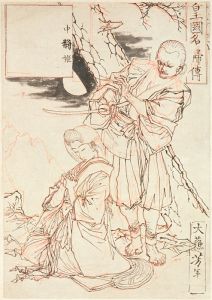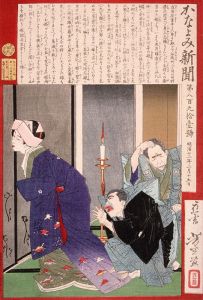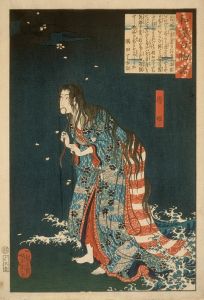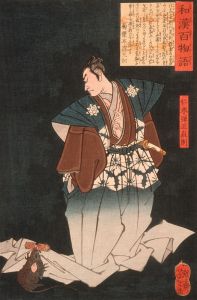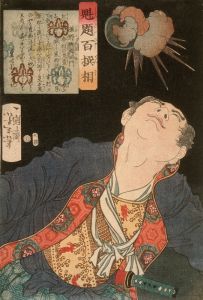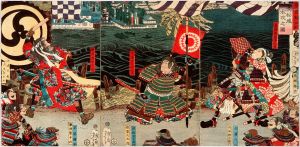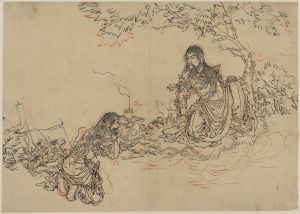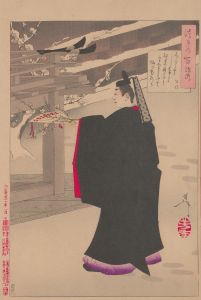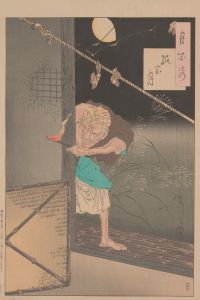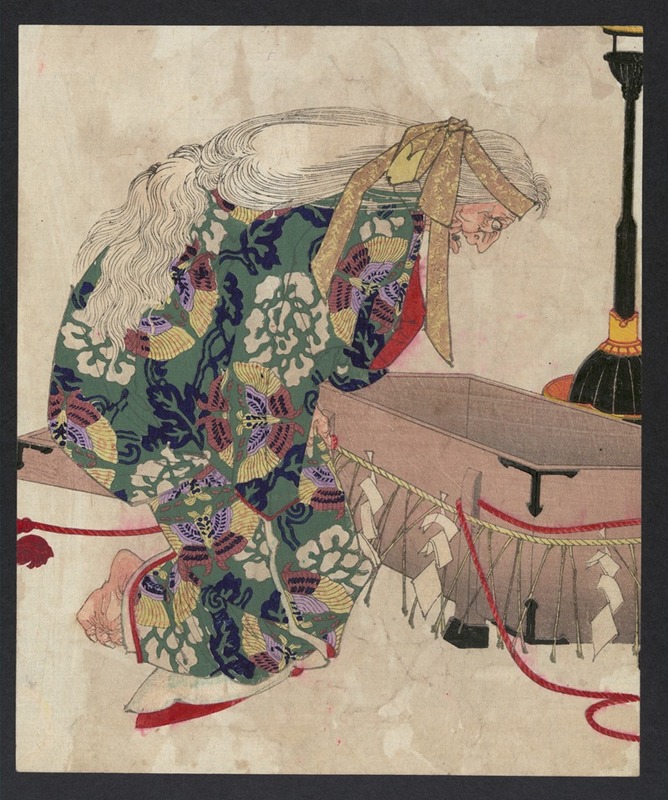
Watanabe no tsuna to ibaraki
A hand-painted replica of Tsukioka Yoshitoshi’s masterpiece Watanabe no tsuna to ibaraki, meticulously crafted by professional artists to capture the true essence of the original. Each piece is created with museum-quality canvas and rare mineral pigments, carefully painted by experienced artists with delicate brushstrokes and rich, layered colors to perfectly recreate the texture of the original artwork. Unlike machine-printed reproductions, this hand-painted version brings the painting to life, infused with the artist’s emotions and skill in every stroke. Whether for personal collection or home decoration, it instantly elevates the artistic atmosphere of any space.
"Watanabe no Tsuna to Ibaraki" is a woodblock print created by the renowned Japanese artist Tsukioka Yoshitoshi. Yoshitoshi, who lived from 1839 to 1892, is celebrated for his innovative approach to ukiyo-e, a genre of Japanese art that flourished from the 17th through 19th centuries. He is particularly known for his series "One Hundred Aspects of the Moon," which explores various themes from Japanese history, folklore, and literature, often with a supernatural or dramatic twist.
This particular print, "Watanabe no Tsuna to Ibaraki," depicts a famous tale from Japanese folklore involving the legendary samurai Watanabe no Tsuna and the demon Ibaraki-dōji. The story is set during the Heian period, a time characterized by the courtly culture and the emergence of samurai as a distinct class. Watanabe no Tsuna was a retainer of the famous warrior Minamoto no Yorimitsu, also known as Raikō. He is one of the "Four Guardian Kings" (Shitennō) who served under Raikō.
The legend tells of a demon, Ibaraki-dōji, who haunted the Rashomon Gate in Kyoto, terrorizing the locals. Watanabe no Tsuna was tasked with confronting this demon. According to the tale, Tsuna encountered Ibaraki-dōji at the gate and engaged in a fierce battle. During the fight, Tsuna managed to sever the demon's arm, causing Ibaraki-dōji to flee. Tsuna took the severed arm back to his residence as a trophy. However, the demon later returned, disguised as Tsuna's aunt, and tricked him into returning the arm.
Yoshitoshi's depiction captures the dramatic moment of the confrontation between Tsuna and Ibaraki-dōji. His use of dynamic lines and vivid colors brings the scene to life, emphasizing the tension and supernatural elements of the story. Yoshitoshi was known for his ability to convey emotion and movement, and this print is a testament to his skill in illustrating legendary narratives with a sense of immediacy and drama.
The print is part of Yoshitoshi's broader exploration of themes involving bravery, the supernatural, and the human condition. His works often reflect the cultural and social changes occurring in Japan during the late Edo and early Meiji periods, as the country transitioned from a feudal society to a modern state. Yoshitoshi's art, including "Watanabe no Tsuna to Ibaraki," remains influential and is studied for its artistic merit and historical significance.
Yoshitoshi's prints are highly regarded for their technical excellence and their ability to capture the complexities of human emotion and the fantastical elements of Japanese folklore. "Watanabe no Tsuna to Ibaraki" is a prime example of his mastery in blending traditional Japanese themes with innovative artistic techniques, making it a valuable piece for both art historians and enthusiasts of Japanese culture.





